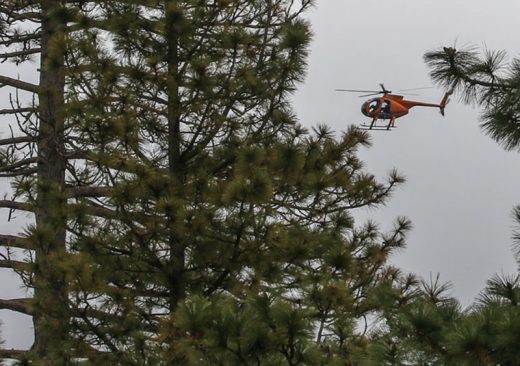
Idyllwild work done for this year
The California Public Utilities Commission is mandating public utilities to conduct annual inspections in an effort to thwart potential fires, which faulty or old equipment might ignite. Southern California Edison (SCE) began inspecting its power poles and electric lines with helicopters this spring. SCE used the helicopters to identify weak spots in its distribution system, which could not be detected from the ground.
“I believe we’re done in Idyllwild,” said Jeremy Goldman, SCE’s government relations manager.
“There were some areas that we had to check,” he said in response to the flights on Aug. 16 and 17. “These types of inspections have to be comprehensive. Every piece of equipment in Idyllwild has been checked.”
Helicopters are used to conduct overhead inspections for all of SCE’s high priority local equipment, according to Goldman.
With elaborate and sophisticated camera equipment, the helicopter crews scan the poles and wires. The equipment utilizes infrared detection, corona discharge scanning (identifying ionized air from a power discharge) and high definition imagery technology. This digital data is transmitted to SCE’s operation center, where it is stored, reviewed and analyzed.
The spring flights over Idyllwild resulted in a sudden, unplanned project to replace power poles along Highway 243 in late July. For two days, SCE crews worked along Highway 243 from Marion View Drive to Saunders Meadow Road (adjacent to Idyllwild School). They replaced lines and poles that were flagged from the initial flight data.
“They’re looking for any danger signs such as insect or weather damage to the poles,” Goldman said. “Even normal wear and tear is identified as a potential danger.”
The review team can initiate a work order, which is what happened in July after the May and June inspections. The work was immediate, which is why customers did not receive alerts from SCE.
“We found during our overhead helicopter inspections that we had some problems with equipment that needed to be addressed immediately,” Mary Ann Milbourn, SCE’s media advisor for corporate communications wrote the Town Crier last month. “As a result, we weren’t able to provide any notice.”
Besides the inspection, SCE is using more fire resistant equipment such as metal poles and covered conductors. In some areas, lines are being laid in the ground. However, this does make inspections more difficult and repair times longer.
The use of weather stations and fire monitoring cameras have increased substantially, Goldman said.
SCE is also investing more money and time in vegetation management. More tree contractors have been added and the removal of dead and dying trees has been increased.










